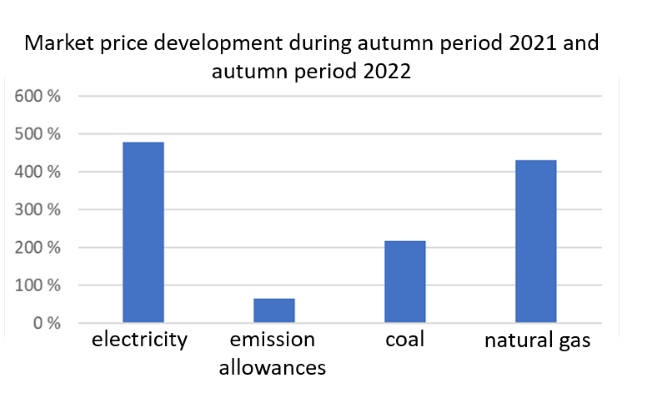Significant increase in costs impacts the price of district heat – announcement of prices until next spring provides transparency
Due to a considerable rise in the cost of raw materials resulting from Russia’s war of aggression, Helen will change the price of district heat over the next three price periods.
The energy fee of district heat in particular is under cost pressure: the energy fee consists of the prices of raw materials, energy taxes, emission allowances and electricity consumption. During the summer, there has been a general increase in prices and inflation due to the unstable global situation and especially Russia’s war of aggression. As a result, the prices of raw materials used in heat production, which have already seen an increase, have also risen significantly. The price of district heat consists of the above-mentioned seasonal energy fee and a fixed contracted water flow fee.
“Although we have to increase the energy fee of district heat, we will not pass all of the costs to our customers: we have significantly cushioned exceptionally high price impacts. We also want to create stability for our customers by notifying the price of the next three price periods in advance. We do understand that the price increase is a burden to a Helsinki resident with district heating,” says Anu-Elina Hintsa, Helen’s Senior Vice President, Sales & Customer Service.

The market prices of emission allowances, coal, natural gas and electricity have grown by an exceptional amount compared with the 2021 autumn period.
The price of district heat for the next three price periods
We want to provide our customers with transparency and stability at a time of great turbulence in the energy market and therefore we are now updating the prices for the next three price period. Thefixed water flow fee list prices will remain unchanged during the next three price periods, but the price of the energy fee for each following price period will rise 30%. Price changes are always compared to the corresponding period in the previous year and not on top of the price in the previous price period. The changes mean that for 2022 the total price of district heat products for consumer customers will rise 17% in average. For autumn’s three-month price period starting on 1 October 2022 the total price of a district heat product for consumer customers will rise by 22%, for the two-month winter price period starting on 1 January 2023 by 23% and for the two-month spring price period starting on 1 March 2023 by 22%. The calculation has been based on the typical detached house of Finnish Energy.
- The energy market is experiencing exceptional circumstances. For this reason, we want to protect our heating customers from the worst consequences of the energy crisis by carrying a part of the price impact to district heating. In short term, this means that we will make a seriously negative result in district heating, says Anu-Elina Hintsa.
Distributed production increases self-sufficiency and reduces price pressure
District heat is well on its way to become a carbon-neutral heating method. Distributed energy production, where energy is produced from several different sources, is used more and more in the heating of Helsinki, and in the future it will be the only method of heating in the city. In a carbon-neutral energy system, energy comes from the ground, sea and air, and from waste heat. This increases self-sufficiency, which also reduces the pressure on prices. In the middle of big changes and transitions, safeguarding the energy supply for our customers is always our priority.